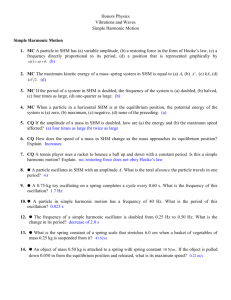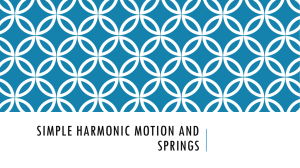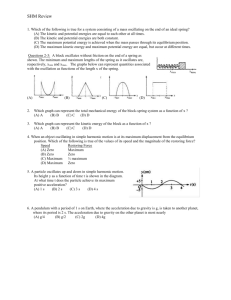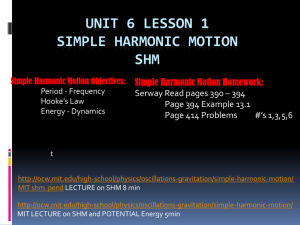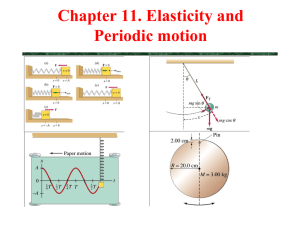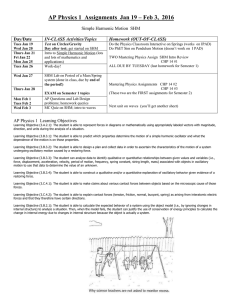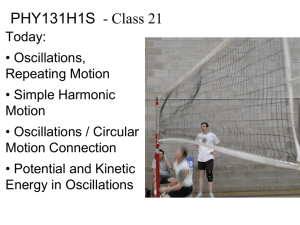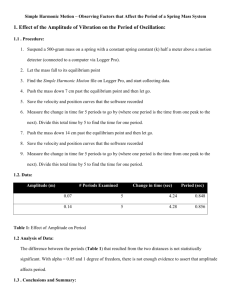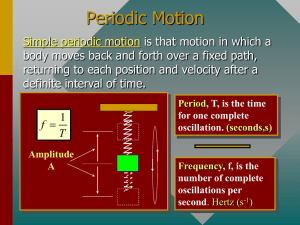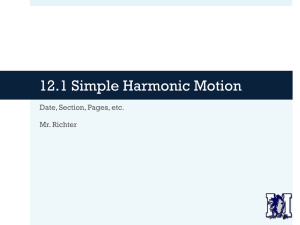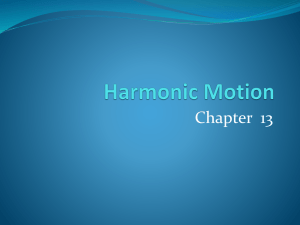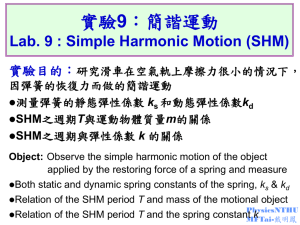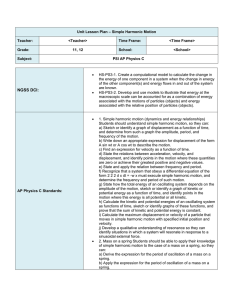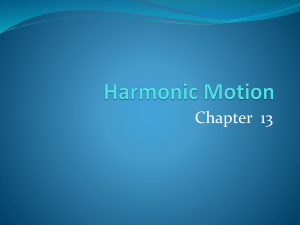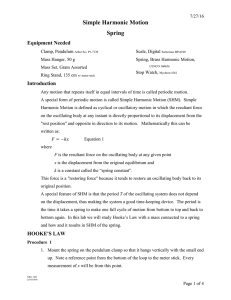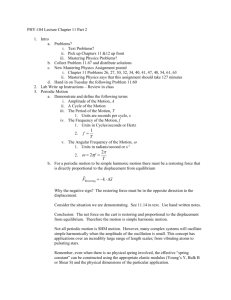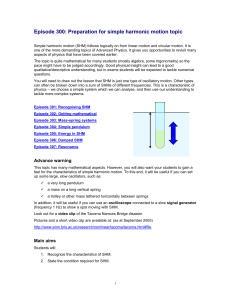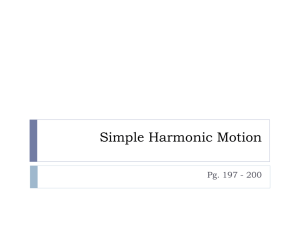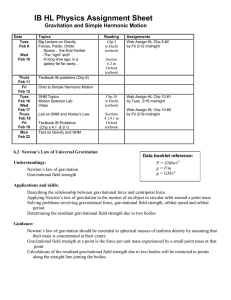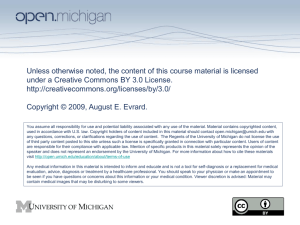Lecture 3-2 Springs and SHM Springs and Simple Harmonic Motion
advertisement
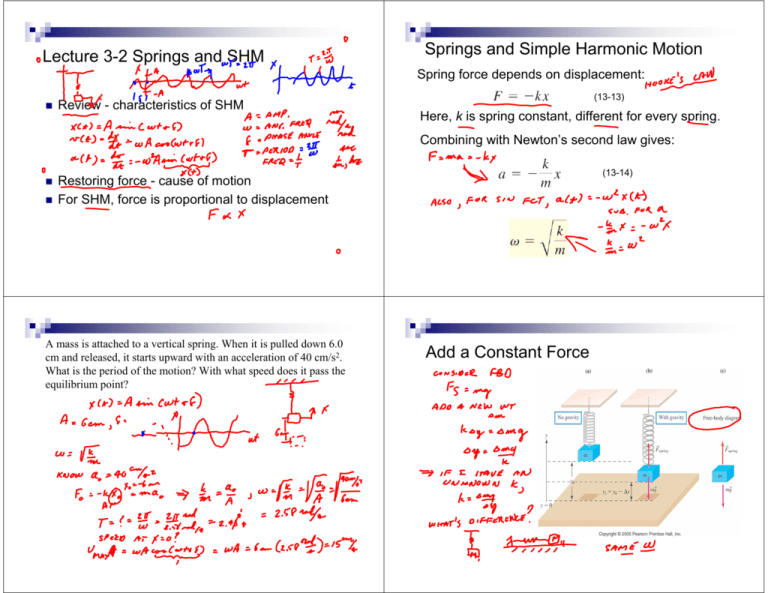
Lecture 3-2 Springs and SHM Springs and Simple Harmonic Motion Spring force depends on displacement: Review - characteristics of SHM (13-13) Here, k is spring constant, different for every spring. Combining with Newton’s second law gives: (13-14) Restoring force - cause of motion For SHM, force is proportional to displacement A mass is attached to a vertical spring. When it is pulled down 6.0 cm and released, it starts upward with an acceleration of 40 cm/s2. What is the period of the motion? With what speed does it pass the equilibrium point? Add a Constant Force Energy and Simple Harmonic Motion Energy and Simple Harmonic Motion Potential energy of mass on a spring: As sin2θ + cos2θ = 1, the sum of the kinetic and potential energies is constant: (13-18) (13-23) And Kinetic energy: The total energy varies from being all potential (at extremes of motion) to all kinetic (when spring is neither stretched nor compressed): (13-19) Substituting for x and v: (13-20) (13-21) Kinetic, Potential, and Total Energy, Figure 13-8 A hockey puck of mass 350 g moves horizontally with speed v =0.88 m/s on a frictionless surface toward the end of a relaxed spring for which k=140N/m, and compresses the spring. By how much is the spring compressed? How would your answer change if the mass of the puck were doubled? Other Applications of SHM Besides springs, there are many other systems that exhibit simple harmonic motion. Here are some examples: Questions If the amplitude of a simple harmonic motion is doubled, what happens to the maximum kinetic energy? If adding a constant force to a spring force means the motion remains periodic with the same frequency, is the same true when the force is aligned in a different direction than the spring force? Here’s why SHM is so general: Potential well - Figure 13-11
